DNA methylation patterns in CD4+ T-cells separate psoriasis patients from healthy controls, and skin psoriasis from psoriatic arthritis
- PMID: 37662940
- PMCID: PMC10472451
- DOI: 10.3389/fimmu.2023.1245876
DNA methylation patterns in CD4+ T-cells separate psoriasis patients from healthy controls, and skin psoriasis from psoriatic arthritis
Abstract
Background: Psoriasis is an autoimmune/inflammatory disorder primarily affecting the skin. Chronic joint inflammation triggers the diagnosis of psoriatic arthritis (PsA) in approximately one-third of psoriasis patients. Although joint disease typically follows the onset of skin psoriasis, in around 15% of cases it is the initial presentation, which can result in diagnostic delays. The pathophysiological mechanisms underlying psoriasis and PsA are not yet fully understood, but there is evidence pointing towards epigenetic dysregulation involving CD4+ and CD8+ T-cells.
Objectives: The aim of this study was to investigate disease-associated DNA methylation patterns in CD4+ T-cells from psoriasis and PsA patients that may represent potential diagnostic and/or prognostic biomarkers.
Methods: PBMCs were collected from 12 patients with chronic plaque psoriasis and 8 PsA patients, and 8 healthy controls. CD4+ T-cells were separated through FACS sorting, and DNA methylation profiling was performed (Illumina EPIC850K arrays). Bioinformatic analyses, including gene ontology (GO) and KEGG pathway analysis, were performed using R. To identify genes under the control of interferon (IFN), the Interferome database was consulted, and DNA Methylation Scores were calculated.
Results: Numbers and proportions of CD4+ T-cell subsets (naïve, central memory, effector memory, CD45RA re-expressing effector memory cells) did not vary between controls, skin psoriasis and PsA patients. 883 differentially methylated positions (DMPs) affecting 548 genes were identified between controls and "all" psoriasis patients. Principal component and partial least-squares discriminant analysis separated controls from skin psoriasis and PsA patients. GO analysis considering promoter DMPs delivered hypermethylation of genes involved in "regulation of wound healing, spreading of epidermal cells", "negative regulation of cell-substrate junction organization" and "negative regulation of focal adhesion assembly". Comparing controls and "all" psoriasis, a majority of DMPs mapped to IFN-related genes (69.2%). Notably, DNA methylation profiles also distinguished skin psoriasis from PsA patients (2,949 DMPs/1,084 genes) through genes affecting "cAMP-dependent protein kinase inhibitor activity" and "cAMP-dependent protein kinase regulator activity". Treatment with cytokine inhibitors (IL-17/TNF) corrected DNA methylation patterns of IL-17/TNF-associated genes, and methylation scores correlated with skin disease activity scores (PASI).
Conclusion: DNA methylation profiles in CD4+ T-cells discriminate between skin psoriasis and PsA. DNA methylation signatures may be applied for quantification of disease activity and patient stratification towards individualized treatment.
Keywords: CD4+ T-cell; biomarker; epigenetics; interferon; methylation; psoriasis; psoriatic arthritis.
Copyright © 2023 Natoli, Charras, Hofmann, Northey, Russ, Schulze, McCann, Abraham and Hedrich.
Conflict of interest statement
The authors declare that the research was conducted in the absence of any commercial or financial relationships that could be construed as a potential conflict of interest.
Figures
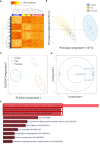
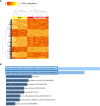
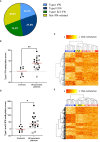
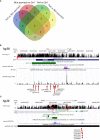
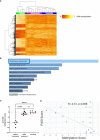
Similar articles
-
DNA Methylation Patterns in CD8+ T Cells Discern Psoriasis From Psoriatic Arthritis and Correlate With Cutaneous Disease Activity.Front Cell Dev Biol. 2021 Oct 21;9:746145. doi: 10.3389/fcell.2021.746145. eCollection 2021. Front Cell Dev Biol. 2021. PMID: 34746142 Free PMC article.
-
Tissue-Resident Memory CD8+ T Cells From Skin Differentiate Psoriatic Arthritis From Psoriasis.Arthritis Rheumatol. 2021 Jul;73(7):1220-1232. doi: 10.1002/art.41652. Epub 2021 May 25. Arthritis Rheumatol. 2021. PMID: 33452865 Free PMC article.
-
Rheumatoid Arthritis Patients, Both Newly Diagnosed and Methotrexate Treated, Show More DNA Methylation Differences in CD4+ Memory Than in CD4+ Naïve T Cells.Front Immunol. 2020 Feb 14;11:194. doi: 10.3389/fimmu.2020.00194. eCollection 2020. Front Immunol. 2020. PMID: 32117312 Free PMC article.
-
Role of IL-17 in psoriasis and psoriatic arthritis.Clin Rev Allergy Immunol. 2013 Apr;44(2):183-93. doi: 10.1007/s12016-012-8307-1. Clin Rev Allergy Immunol. 2013. PMID: 22362575 Review.
-
Managing patients with psoriatic disease: the diagnosis and pharmacologic treatment of psoriatic arthritis in patients with psoriasis.Drugs. 2014 Mar;74(4):423-41. doi: 10.1007/s40265-014-0191-y. Drugs. 2014. PMID: 24566842 Free PMC article. Review.
Cited by
-
Differences between psoriatic arthritis and psoriasis in multi-omics.Arch Dermatol Res. 2024 May 24;316(6):217. doi: 10.1007/s00403-024-03018-9. Arch Dermatol Res. 2024. PMID: 38787526 Review.
-
Deciphering the causal association and co-disease mechanisms between psoriasis and breast cancer.Front Immunol. 2024 Mar 28;15:1304888. doi: 10.3389/fimmu.2024.1304888. eCollection 2024. Front Immunol. 2024. PMID: 38605947 Free PMC article.
-
Integrated single-cell chromatin and transcriptomic analyses of peripheral immune cells in patients with alopecia areata.Front Immunol. 2025 Jul 2;16:1565241. doi: 10.3389/fimmu.2025.1565241. eCollection 2025. Front Immunol. 2025. PMID: 40672948 Free PMC article.
-
Effects of tumor necrosis factor-alpha inhibitors on lipid profiles in patients with psoriasis: a systematic review and meta-analysis.Front Immunol. 2024 Mar 4;15:1354593. doi: 10.3389/fimmu.2024.1354593. eCollection 2024. Front Immunol. 2024. PMID: 38500874 Free PMC article.
-
The Role of Epigenetic Factors in the Pathogenesis of Psoriasis.Int J Mol Sci. 2024 Mar 29;25(7):3831. doi: 10.3390/ijms25073831. Int J Mol Sci. 2024. PMID: 38612637 Free PMC article. Review.
References
Publication types
MeSH terms
Substances
Grants and funding
LinkOut - more resources
Full Text Sources
Medical
Molecular Biology Databases
Research Materials
Miscellaneous

